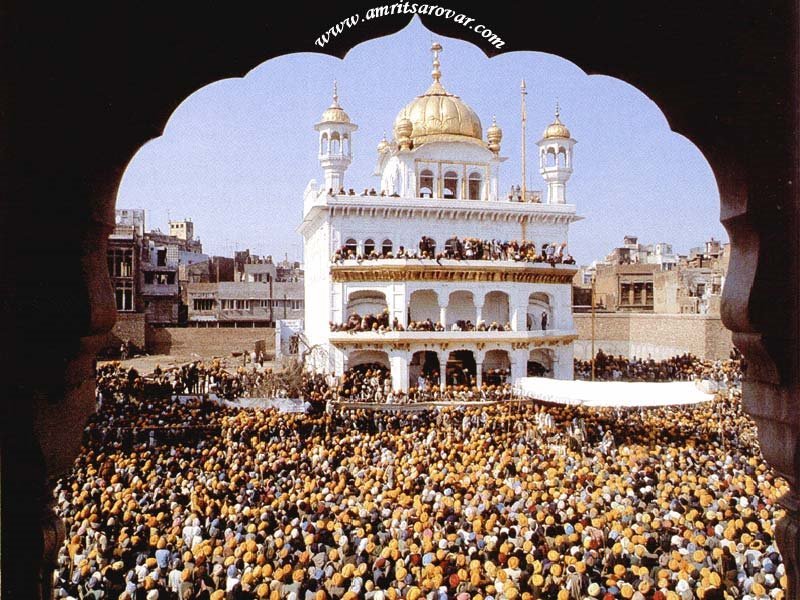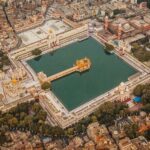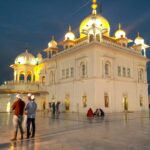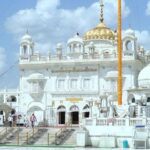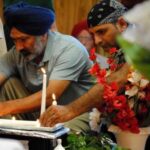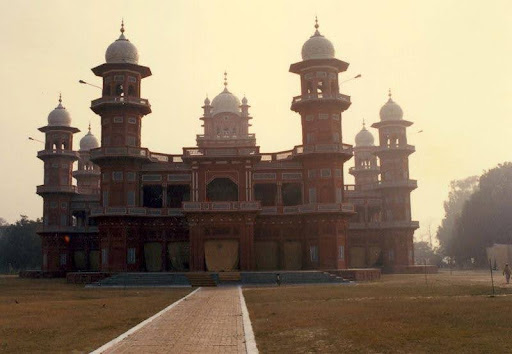The supreme seat of religious and temporal authority of its sort for Sikhs worldwide is Sri Akal Takht Sahib Amritsar, often known as “the throne of the immortal.” Every Sikh salutes this institution with respect and humility. Akal Takht Sahib has shaped the religious, social, and political future of the Sikhs since its founding. It has had an impact on the Sikhs’ history and way of life. It is the only institution of its sort in the world that is both firmly secular and profoundly religious, allowing temporal and spiritual power to coexist. It serves as a reminder of the Sikh religion’s unifying principles and nonviolent politics. It is a location where dignity and divinity coexist. It is a source that serves as motivation for the idea that righteousness must be defended with a sword and rosary in each hand. It is a tremendous authority that will direct the Sikh nation’s future. The establishment of the different Sikh identities of Miri and Piri has been significantly aided by Sri Akal Takht. It is a “Raj Sanghasan” (Royal Throne), in the words of Bhai Kahan Singh Nabha.
Guru Arjan Dev Ji constructed the main shrine at Amritsar (Punjab) in the name of Sri Harmandar Sahib (the fifth Guru of Sikhs). All Sikhs around the world must abide by the Takht Sahib. The Sikh Sangat is given orders that are in the best interests of the Sikh people. All Sikhs worldwide must abide by the Gurmatas and Hukamnamas (Decrees) given by Sri Akal Takht Sahib.
Background of Mughal oppression at Sri Akal Takht Sahib
Mughals ruled India at the time Akal Takht was constructed. The moderate Emperor Akbar was succeeded by Emperor Jehangir. He requested that Guru Arjan Dev give up Sikhism and convert to Islam. Guru Arjan Dev rejected it, declaring that he would not abandon his faith under any circumstances. The Guru was ordered to sit on extremely hot iron plates by the Emperor, who viewed it as a shame. He was doused in burning sand. He was completely boiled in the caldrons. On May 30, 1606, the Guru dedicated his life to justice without moving an inch. It was considered that righteousness needed to be defended with both a sword and a rosary. Following Blue Star Ghallughara, the Sikhs were attacked by Akal Takht Sahib.
In June 1984, when Indian Prime Minister Indra Gandhi ordered the military to invade the Sikhs’ holiest shrine, the Indian Army recently destroyed the Akal Takht structure. Serious damage was done to Sri Harmandar Sahib. In this operation, hundreds of innocent pilgrims were killed together with the most priceless Sikh Reference Library. Sikhs all around the world were furious. The Government could certainly destroy the structure, but it couldn’t destroy the Sikhs’ indomitable spirit. The terrible incident infuriated Sikhs all over the world.
During this Ghallughara, Sant Jarnail Singh Bhindranwale and thousands of other leaders of the Khalistan human rights movement lost their life.
The third Ghallughara, according to the Sikhs, was not the Blue Star Operation, as claimed by the government. Whatever it was, it left the Sikh mentality scarred. This transgression caused great trembling, humiliation, and deep pain among the whole Sikh community.
Although wounds can mend, the trauma done to the Sikhs’ nervous system will keep their bleeding history agonizing them. Akal Takht was the location of the Sarbat Khalsa meetings throughout the 18th century, especially during the trying times for the Sikhs. Typically, they suggested gathering at the Akal Takht twice a year, during the holidays of Baisakhi and Diwali, which were suitable periods for such meetings when the agriculturalists were free to visit the Akal Takht. There were large gatherings that took advantage of their pilgrimages to Harimandir and Akal Takht on the occasions of fairs and festivals to address the issues facing the community. They would get together on other occasions as well, usually when there was a pressing political issue that needed to be addressed, a national emergency, a huge expedition, or both. The Sifts gathered at Akal Takht after Tara Singh Van and his friends were slain in 1726 and decided to assert themselves to render the government apparatus dormant and inoperative.
In general, the size of the crowd at Akal Takht matched the severity of the threat to the Sikhs. The Sarbat Khalsa assembly meetings were called by the community’s leaders to pass Gurmatas. In general, the size of the crowd at Akal Takht matched the severity of the threat to the Sikhs. The Sarbat Khalsa assembly meetings were called by the community’s leaders to pass Gurmatas. John Malcolm writes that when the chiefs gather on this solemn occasion, it is concluded that all personal enmities cease and that each man sacrifices his personal feelings at the shrine of the greater good and is motivated solely by the interests of the religion and commonwealth to which he belongs.16
They then discussed the threat to their safety while seated in front of the Guru Granth Sahib at Akal Takht.
